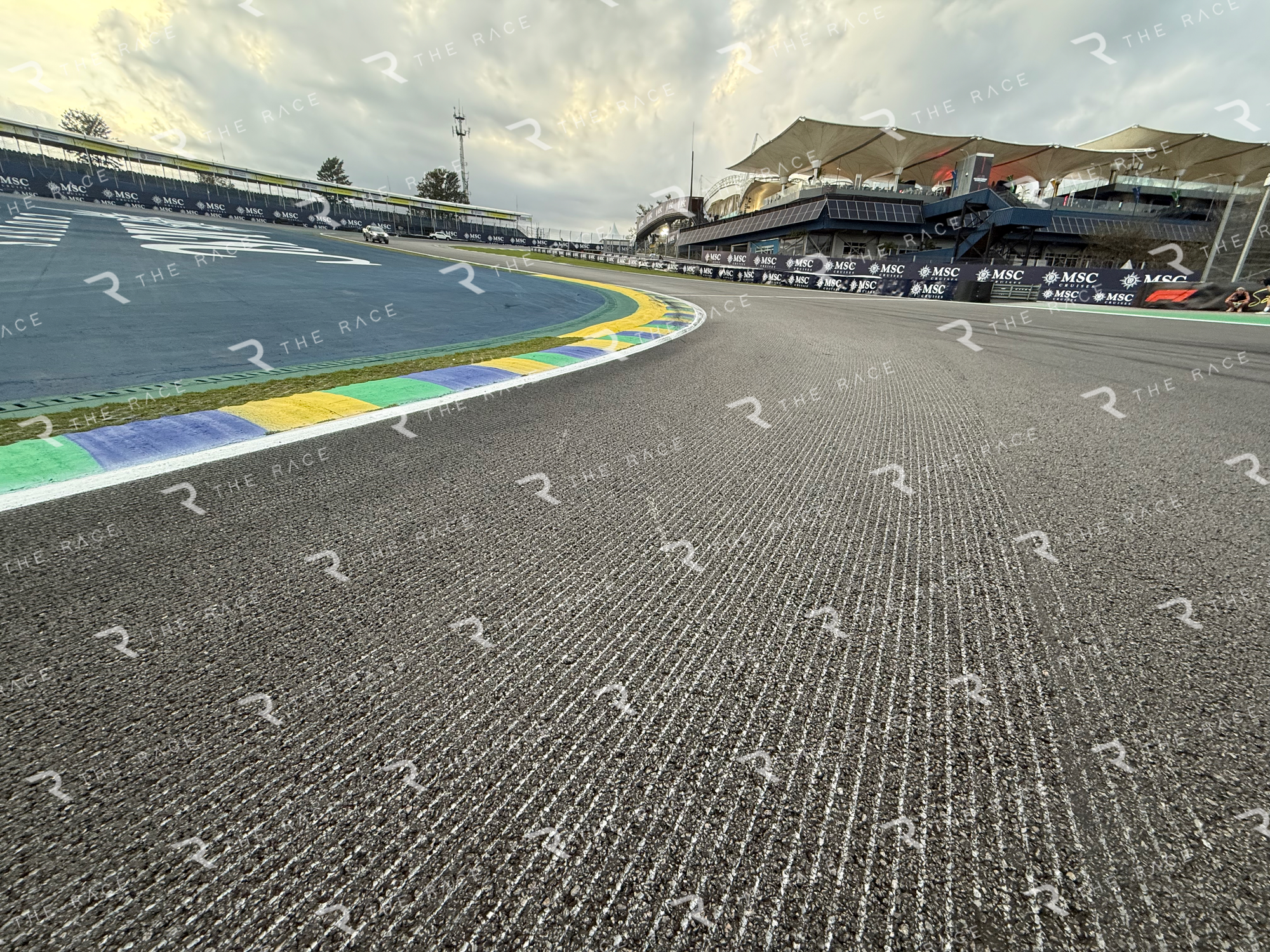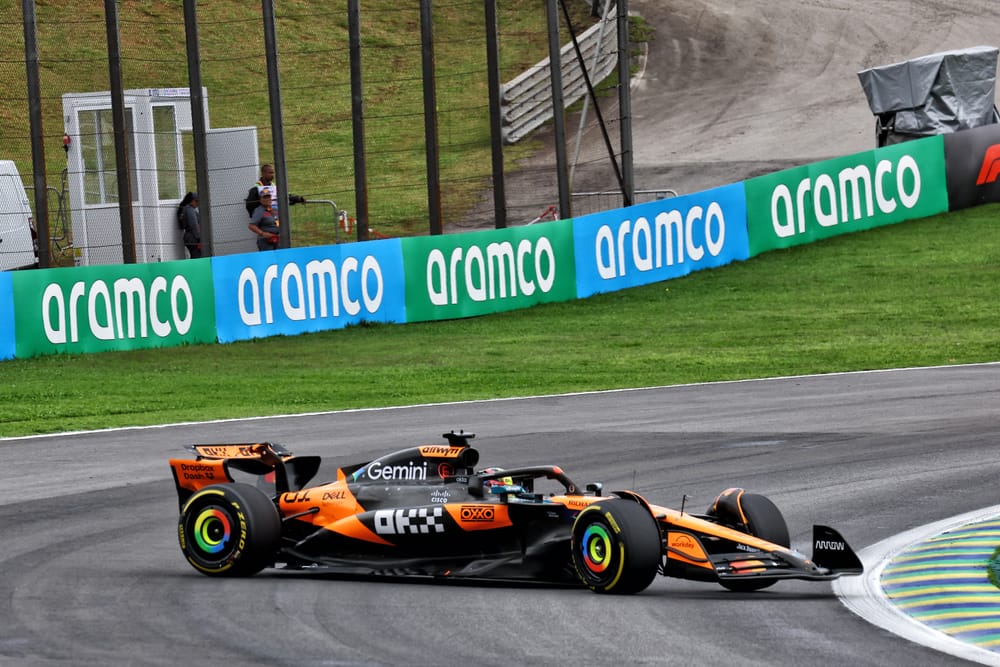Up Next

Formula 1 title contender Oscar Piastri’s Brazilian Grand Prix weekend was derailed by his sprint crash and the 10-second penalty he got in the main race for his clash with Kimi Antonelli at the early restart.
But even without those incidents, the McLaren driver never appeared to have the potential to overhaul team-mate Lando Norris, who delivered a pole and victory double.
While Piastri had been quick in the best conditions of the weekend on Friday, things steadily drifted away from him after the sprint, where he had been competitive and pushing Antonelli for second before his crash.
What Piastri referred to as subsequent “odd” behaviour from the tyres in their lack of grip meant Interlagos became another weekend where Norris’s driving style - where he copes better with a sliding car - was more suited to what was needed.
There was certainly a degree of head scratching from Piastri about just what had happened over the weekend as the grip levels were far from what he needed.
“The soft tyre was obviously behaving very strange this weekend, and it was hardly better than the medium,” he said.
“The grip conditions [on Saturday] were again very bizarre. To not go any quicker from Q1 to Q3 is almost unheard of, especially after so much rain.
“So clearly something has been a bit odd. The car's been more or less the same.
“We're trying to put it in the same window but it's just other factors that have made things difficult. I'm also trying to work on how I can adapt to that better and kind of add more tools to my arsenal.”
The new Interlagos grooves
One intriguing extra factor at play that further shifted things away from Piastri was a consequence of what appeared to be some relatively minor track changes made to the Interlagos track.
Following the wet weather dramas last year, Brazilian organisers had cut drainage grooves into several areas of the track to help provide channels that disperse water.
These are at Turn 2 (pictures are from here), from the pit exit to Turn 4, on the straight after Turn 5, the run between Turns 11 and 12 and then along the grid.

While these grooves are present at other tracks, Pirelli motorsport director Mario Isola reckoned that this was the first time that they had ever been cut into areas of the track where cars are grip limited.
The grooves may not look like being the sort of thing that should be relevant to lap time.
However, with the extremely narrow performance window that current F1 cars operate in, there were two impacts from these grooves.
Read more: The unusual solution taken to prevent repeat of Brazil sprint crashes
The first was that by the cars running across the ridges, the tyres had less contact patch with the track than normal – so slid more and this increased degradation.
But the groove also triggered some car set-up headaches as well.
Ride-height critical
Current F1 car performance is dominated by airflow under the car, and the more consistent that flow is, and the lower you can run, the better it is.
There is nothing better for teams than a super smooth track with no bumps.
Few tracks offer that, and Interlagos has always been quite a bumpy venue. However, things were complicated by the cars running across these grooves.
For some teams, as their cars rolled over the edges, that triggered movement that impacted the underfloor skids and caused plank wear that was so excessive it risked disqualification if it continued like that for the full race distance.
How much teams had to compromise their ride heights varied across the grid, but McLaren boss Andrea Stella reckoned it was this response that offered some big clues about some general performance weirdness over the Brazil weekend.
“The circuit itself is very sensitive in terms of lap time to ride-heights,” he said.
“So there could be cars that produce all their downforces at very low ride-heights and here they may be struggling. You can't go too low, because you would wear your planks just too fast.
“So I think these are the factors which make this circuit in these conditions very anomalous."
McLaren was one of those teams that found after the sprint that, in order to ensure it was not caught out by its plank wearing too much, it had to lift its ride height to play it safe.
This created a performance compromise by reducing downforce potential – and therefore further exacerbated the lack of grip problems that hurt Piastri so much.
As he explained on Sunday night: “It kind of went away from us a little bit through the weekend.
"I think even just our pace as a team, I don't think was as strong as it was on Friday. And the car kind of went in a direction that I wasn't a big fan of.”
A totally different approach
The ride height compromise exacerbated by the grooves may be one factor of many that meant Piastri’s weekend did not deliver the results that he had hoped for, but these are the exact small details that decide race weekends and world championships. He has now fallen 24 points behind Norris with three rounds left.

Piastri readily accepts that things have not been easy for him in recent races when grip levels have been low, because to extract the best speed from the McLaren requires a totally different driving style to what he established at the start of this year.
As he told The Race about where he was at with the car right now, Piastri said: “It's kind of one thing adapting to different conditions, but when the way you've driven for the whole season has worked so well, it's kind of difficult to go away from that, I would say.
“So there's been a lot of learning on that side of things and trying to adapt to different things.”
Piastri’s hope now is that the next venue in Las Vegas offers him an immediate better hunting ground to rediscover the confidence that put him at such a strong level early in the year.



